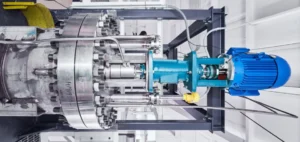Nuclear fusion, often referred to as “energy from the stars”, holds great promise for our planet’s energy future. This technology, which represents a turning point in scientific research, is symbolized by the recent JT-60SA project in Japan. In parallel with the challenges faced by the Iter program in France, the JT-60SA is emerging not only as an essential complement, but also as a leader in the field.
The JT-60SA: A Titan of Nuclear Fusion
The JT-60SA, located at the Naka Fusion Institute, stands out as the largest operational tokamak, surpassing its competitors in scale and capacity. This achievement is the fruit of close collaboration between Japan and the European Union, initiated in 2007 and brought to fruition after years of hard work. The inauguration of this 15.5-metre-high, 13.5-metre-diameter colossus represents an important milestone in the quest for clean, sustainable energy.
Scientific and Technological Success
The JT-60SA took a decisive step forward with plasma production last October, marking a key milestone in nuclear fusion research. This success is not just a technical triumph, but also a promising sign for the future of energy. Nuclear fusion, which mimics the energy processes of the stars, offers an environmentally-friendly alternative, producing little radioactive waste and without the dangers associated with today’s nuclear power plants.
Prospects and Challenges of Nuclear Fusion
While the JT-60SA is moving forward, the Iter program in France is facing obstacles, potentially delaying its objectives. These challenges underline the importance of international collaboration and continuous innovation. Moreover, recent advances in the United States, with a net gain in energy thanks to a different technology, demonstrate the diversity and vitality of the field.
Towards a Renewed Energy Future
Nuclear fusion is at the forefront of the energy revolution, promising a clean and abundant source of energy. The JT-60SA’s efforts, combined with worldwide progress, raise hopes of viable commercial operation in the near future.
The emergence of the JT-60SA as a leader in nuclear fusion research marks an era of cooperation and innovation. This breakthrough represents a giant step towards a sustainable, carbon-free energy future.






















